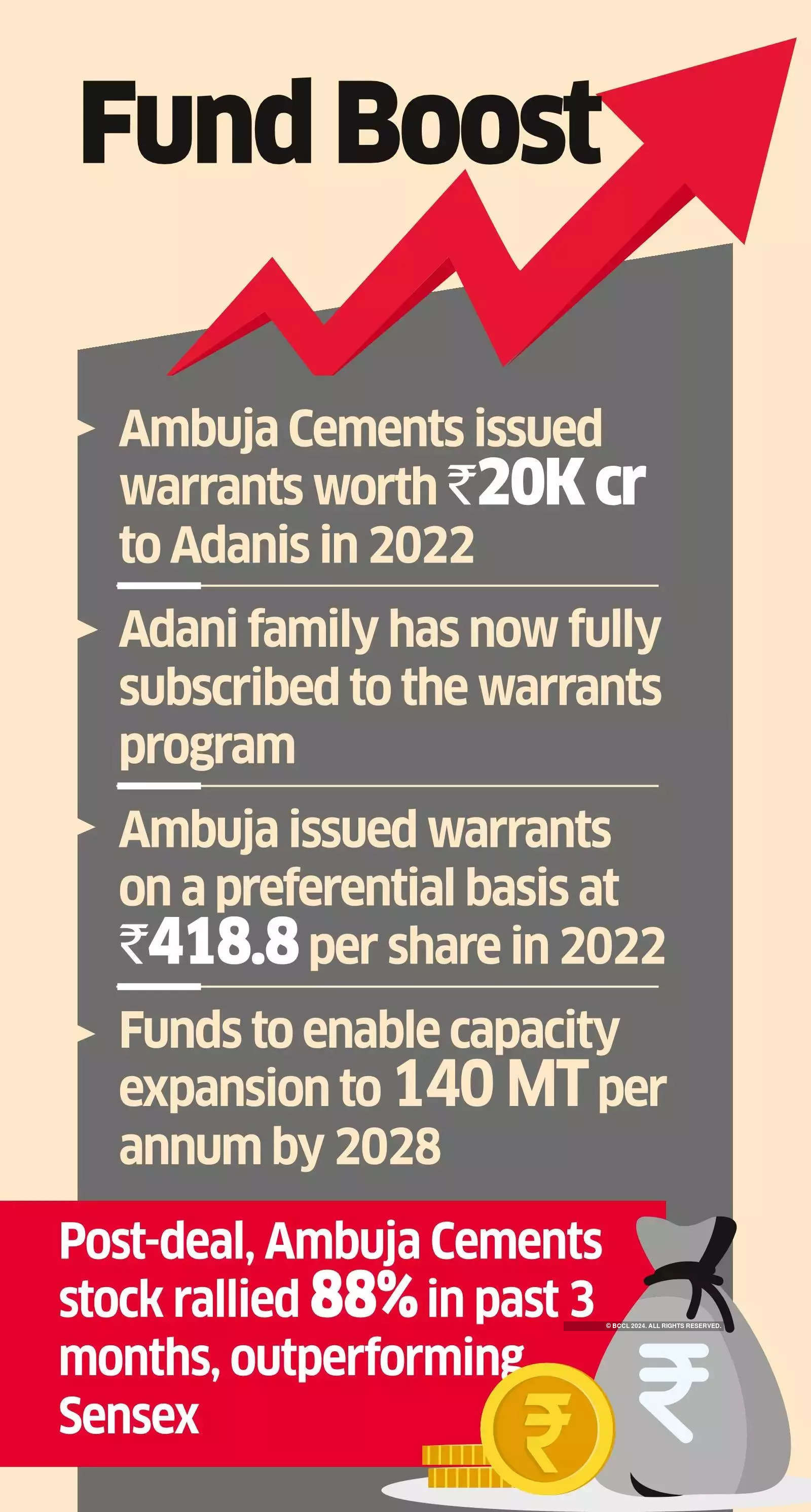The Adani Group has increased its stake in Ambuja Cements by 3.6%, bringing it to 70.3%, through the conversion of warrants into equity. The company announced on Wednesday that the Adani family, promoters, has fully subscribed to the warrants program by injecting remaining Rs 8,339 crore out of the total Rs 20,000 crore.
In October 2022, Ambuja Cements issued warrants totaling Rs 20,000 crore to the Adanis on a preferential basis at Rs 418.8 per share. Initially, the company received Rs 5,000 crore (25% of the warrant issue) as the mandatory upfront payment. On March 28, 2024, the group paid Rs 6,661 crore towards part of the shares’ issuance.
Currently, the Ambuja Cements stock is trading at Rs 555, a 47% premium over the issue price of Rs 418.8. The stock rallied 88% in the past three months compared to a 17% jump in the benchmark Sensex.

In 2022, the Adani Group acquired Swiss cement major Holcim’s stake in Ambuja Cements and ACC.
The additional investment will fortify the Company’s financial position, providing it with enhanced capabilities to pursue its ambitious growth plans and capitalize on emerging opportunities in the market, the company said in a statement.
The funds infusion will be instrumental in accomplishing the capacity of 140 million tonnes per annum by 2028 by the cement vertical. I will also enable various strategic initiatives, including debottlenecking capex, to enhance operational performance, as well as bring efficiencies across the resources supply chain.
“This infusion of funds provides Ambuja capital flexibility for fast-tracked growth, capital management initiatives and best-in-class balance sheet strength,” said Ajay Kapur, CEO of Ambuja Cements. “It is not only a testament to steadfast belief in our vision and business model but also reinforces our commitment to delivering long-term sustainable value creation to our stakeholders, and this shall propel us towards setting new benchmarks, accelerating our growth and continuing to deliver on operational excellence, business synergies and cost leadership.”
Source: Economic Times